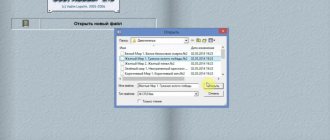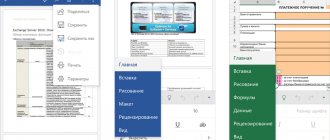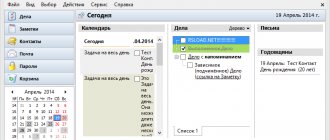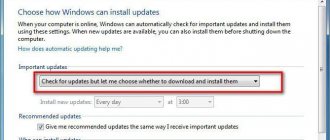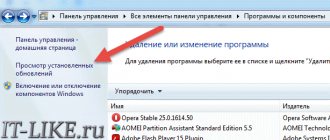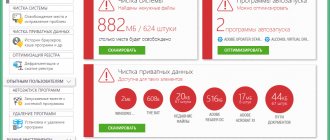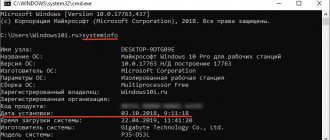IBM lotus symphony.exe - How to fix errors [SOLVED]
Sometimes ibm lotus symphony.exe and other EXE system errors can be related to problems in the Windows registry. Several programs can use the ibm lotus symphony.exe file, but when those programs are uninstalled or modified, sometimes "orphaned" (incorrect) EXE registry entries are left behind.Basically, this means that while the actual path of the file may have changed, its incorrect former location is still recorded in the Windows Registry. When Windows tries looking up these incorrect file references (file locations on your PC), ibm lotus symphony.exe errors can occur. Additionally, a malware infection may have corrupted registry entries associated with Third-Party Application. Thus, these corrupt EXE registry entries need to be fixed to fix the problem at the root.
Manually editing the Windows registry to remove invalid ibm lotus symphony.exe keys is not recommended unless you are PC service professional. Mistakes made when editing the registry can render your PC inoperable and cause irreparable damage to your operating system. In fact, even one comma placed in the wrong place can prevent your computer from booting!
Due to this risk, to simplify the process, it is recommended to use a program to clean the OS registry. A registry cleaner automates the process of finding invalid registry entries, missing file references (like the one causing your ibm lotus symphony.exe error), and broken links in the registry. Before each scan, a backup is automatically created with the ability to undo any changes with one click, protecting against the possibility of damaging your PC.
As a Microsoft Silver Partner, we provide software to help you resolve the following issues:
- WinThruster OS registry cleaner [download]
Warning: Unless you are an experienced PC user, we DO NOT recommend manually editing the Windows Registry. Using Registry Editor incorrectly may cause serious problems that may require you to reinstall Windows. We do not guarantee that problems resulting from incorrect use of Registry Editor can be corrected. You use Registry Editor at your own risk.
Before you manually repair your Windows registry, you need to create a backup by exporting a portion of the registry associated with ibm lotus symphony.exe (eg. Third-Party Application):
- Click on the Start .
- Type " command " in the search bar... DON'T PRESS ENTER YET !
- CTRL-Shift keys on your keyboard, press ENTER .
- A dialog box for access will be displayed.
- Click Yes .
- The black box opens with a blinking cursor.
- Type " regedit " and press ENTER .
- In the Registry Editor, select the ibm lotus symphony.exe-related key (eg, Third-Party Application) you want to back up.
- From the File , select Export .
- In the Save in , select the folder where you want to save the backup copy of the Third-Party Application key.
- In the File name , enter a name for the backup file, for example, “Third-Party Application backup.”
- Make sure that the Export Range is set Selected Branch .
- Click Save .
- The file will be saved with the extension .reg .
- You now have a backup of your ibm lotus symphony.exe-related registry entry.
The following steps for manually editing the registry will not be described in this article, as they are likely to damage your system. If you would like more information about editing the registry manually, please check out the links below.
We do not accept any responsibility for the results of the actions performed according to the instructions below - you perform these tasks at your own risk.
Windows XP https://www.theeldergeek.com/windows_xp_registry.htm
Windows 7 https://www.theeldergeek.com/windows_7/registry_edits_for_win7.htm
Windows Vista https://support.microsoft.com/kb/2688326 - LetMeFixItMyselfAlways
Installing Lotus Notes 8.5.3
This guide describes the basic steps of installing Lotus Notes 8.5 and provides additional information about both the Lotus Notes program itself and how the installation process works.
Lotus Notes versions
There are three versions of Lotus Notes:
- Lotus Notes Domino Administrator - Installed to administer Lotus Domino servers. Contains components for managing Lotus Domino servers. Exists only for the Windows platform.
- Lotus Domino Designer - Installed for Lotus database developers. Contains components for developing Notes applications. Exists only for the Windows platform.
- Lotus Notes for the user version contains standard functionality that allows you to work with Notes applications (databases). This option is installed on the user’s computer. For completeness, it must be said that this version, in turn, also exists in two versions:
- Lotes Notes Standard - The core of the application is written in Java in the Eclipse environment. Since this option is a Java application i.e. This is a rather “heavy” application that is best installed on a computer with good performance. The Standard version differs in that it contains all the functionality that the developers included in this program (unlike the Basic version, which lacks a small part of the functionality). The Standard version exists for the platforms: Windows, Linux and Mac OS.
- Lotes Notes Basic - The core of the application is written in C and C++, so this option is less demanding on the computing capabilities of the computer. The Basic version can be safely installed on those computers where previous versions of Lotus Notes 7.0.4 or Lotus Notes 6.5 were previously installed. On these computers, Lotes Notes Basic 8.5 will also work without a noticeable drop in performance. The Basic version lacks a small part of the functionality. The Basic version has a simplified user interface and is a bit like the 7th version of Lotus Notes. The Basic version exists for platforms: Windows and Mac OS.
Free evaluation versions of Lotus Notes can be downloaded from the IBM website.
This guide will cover installing Lotus Notes Standard 8.5.3
Additional materials
Automatic and manual installation mode
Lotus Notes can be installed manually or automatically. Automatic mode allows you to install the program with the required settings on several computers at once, without user intervention (in the background). Possible automatic installation modes:
- Installation file. You can pre-prepare the installation file using InstallShield Tuner for Lotus Notes. Then, using Windows group policies, the prepared file is launched on user computers.
- Launch keys. The installer has a number of parameters (launch keys) that you specify to run the installer.
The rest of this guide covers only the manual installation mode.
Additional materials
Unpacking files into a temporary directory
The installer is a self-extracting archive. After the installation starts, the files are unpacked into a temporary directory, the path to which is stored in the %Temp% system variable. The first dialog box contains 2 options that determine where the files will be extracted and whether the extracted files should be stored after installation is complete:
- Option Unpack files to temporary and remove after setup completed. Finally, after the installation process is completed, the unpacked files will be automatically deleted from the %Temp% directory. This option is enabled by default and is suitable in most cases.
- Option Unpack files to temporary and don't remove after compiled. Sometimes it is required that unpacked files, after installing Lotus Notes, are not deleted from the temporary directory. For example, if you need to make changes to the configuration files to adapt the default settings of the program for use in a specific company and/or transfer the (already unpacked) distribution to a network drive for further use.
Possible problems
At this stage, problems rarely arise, but you can still mention 2 problems taken from practice.
- There is not enough space on the disk referenced by the %Temp% directory
- The account under which the program is being installed does not have permission to write to the %Temp% directory.
Lotus Notes licenses
Before installing Lotus Notes, you must purchase a client license. The cost of one client license varies depending on:
- from the field of activity of the company that acquires the license
- depending on the selected licensing scheme
Possible licensing schemes for Lotus Notes:
- Collaboration Express. Only Lotus Notes seats are licensed. Installation of Lotus Domino servers does not require a license.
- The number of servers is unlimited
- Legally (not technically) the use of part of the functionality for Lotus Domino is limited.
- Servers and user workstations are licensed separately
- The number of licenses is determined by the architecture and number of processors installed on the server. To calculate the number of licenses, IBM offers the Processor Value Unit Calculator tool
For example, for companies with less than 1 thousand people, a Domino Collaboration Express license may be suitable, which only purchases Lotus Notes CALs:
- about $170 – 1 client license – for commercial organizations
- about $140 – 1 client license – for government organizations
- about 60$ - 1 client license - for educational organizations
When a company purchases Lotus Notes licenses, IBM (more precisely, the IBM partner through which the purchase was made) tells you the so-called Site number. You should be given a paper (official) document from IBM indicating your Site number, although in practice you will find it out earlier; usually it is sent by email.
Links
Review articles
- Lotus Notes: still reality Computerra #6(431), February 18, 2002
- Lotus Notes 8.0 PC Magazine/RE
For technical specialists
- InterTrust forum
is the oldest Russian forum (the very first entry in the forum was July 9, 1996) for Lotus Notes/Domino specialists - All about Lotus Notes / Domino - a site for technical specialists
- Website about programming in Lotus Notes/Domino - webbook for beginners
This time we decided to diversify our blog and introduce an element of practice. Previously published articles dealt with various technologies, but now it’s time to tell you what projects we are implementing. The first project will be the outsourcing of IBM Lotus Domino/Notes infrastructure
one large European financial holding company with branches in different parts of the world, which started in 2010. Our company carried out the order for this project, resulting in a successful case in the portfolio. We will tell you further about how we do our work, and what knowledge and experience in the field of outsourcing IBM Lotus Domino/Notes are ready to apply in the following projects.
Prerequisites for starting the project
The customer had been working with the Lotus Domino/Notes product since the early 2000s, and was supported by a large staff of in-house administrators and developers. Within several years after the implementation of IBM Lotus Domino/Notes, the customer's IT service refined standard Lotus Notes applications and developed new ones that automated all the main business processes assigned to Lotus. This idyll continued until the well-known economic crisis of 2008, when financial problems pushed the company’s management to the need to optimize financial performance by relieving its IT staff of non-core and routine tasks and concentrating their efforts on core business processes.
As a result, the customer retained only configuration tasks in the field of information security, auditing the outsourcer’s activities, finalizing the design of mailboxes to suit the specifics of their business processes, and was responsible for the business logic of the applications. Everything else was outsourced to IT.
First stage. On your marks. What was to be done?
The customer's IBM Lotus Domino/Notes infrastructure included several dozen servers running mail, Sametime, and applications. Servers and several thousand users were located in locations around the world on several continents. We had to maintain and develop all this remotely. We had to provide the second and third levels of support, and the customer decided to transfer the first level (Service Desk) to one of the Eastern European countries, due to the insufficient (at that time) “multilingualism” of our company’s specialists.
